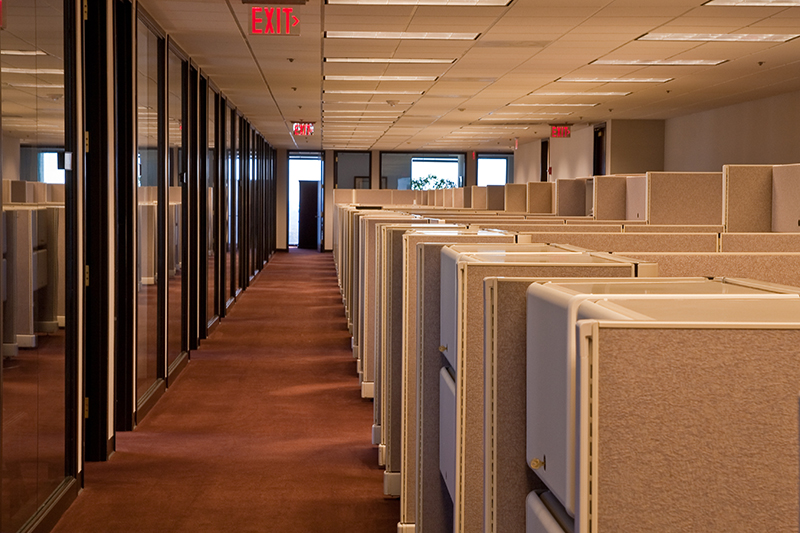
Today’s open offices are detrimental to employees’ health
December 17, 2019
By
Brandon Tinianov
It's simple: people work better when their environment is comfortable

Today’s open-office spaces are grim, boxy failures, says Brandon Tinianov. (dbvirago/Adobe Stock)
When the SC Johnson Company commissioned Frank Lloyd Wright to design its new Wisconsin headquarters in 1939, the groundbreaking architect created one of the world’s first open-office spaces that demonstrated biophilic design — decades before the term was coined.
Two-storey tree-like columns held up a skylight covered ceiling. Natural light filled the space. Wooden desks were spread across the office without walls or corridors.
The space felt expansive, and the building was hailed a success.
In the years since, less-careful designers have copied and commoditized Wright’s open office plan to oblivion.
But instead of capturing the design elements that drove the success — light, space and texture — architects and owners focused on desk proximity and the deconstruction of walls as the heart of design.
The results are everywhere around us.
Low ceilings dotted with artificial bulbs have replaced natural light. Open spaces have become cubicles with penned-in desks.
Today’s open-office spaces are grim, boxy failures.
While we can’t raise the ceilings to those of Wright’s design, we can at least elevate the occupants’ experience to his original vision.
Beyond the negative impressions they create, today’s open-plan offices can also be detrimental to employees’ health and well-being.
Overcrowding creates noise issues and in the case of natural light, the windows in most office spaces amplify the sun’s energy like a greenhouse — causing glare, headaches and eye strain.
Addressing basic needs
A recent survey of corporate employees across Canada found that 70 per cent would consider leaving their current job for one with more attractive health and wellness benefits in the office.
This means more than on-site gyms or healthy food options — those are piecemeal steps that touch only a small segment of the employees.
Rather, employers should be addressing the basic needs that touch every employee — air, light, sound, temperature.
It’s a simple notion: people work better when their environment is comfortable.
Gen Z workers have specific expectations when it comes to workplace comfort. According to the survey, 41 per cent would like to optimize access to natural light from an app and 48 per cent would like to adjust workspace temperature. And 32 per cent said they lose between one and two hours a day to workplace discomfort.
Seventy per cent of the Baby Boomer generation said they are also losing time to workplace discomfort — more than 15 minutes per day.
Workers value the basics of natural light, comfortable temperature and quality air.
Employers need to invest in workplace environments that serve all the working generations.
Brandon Tinianov is vice-president of industry strategy at View in Milpitas, CA.